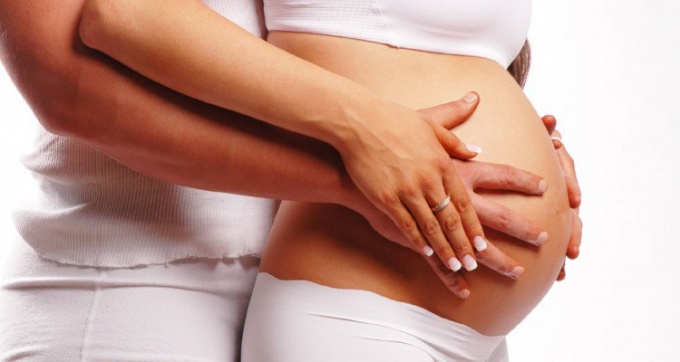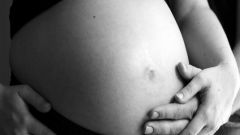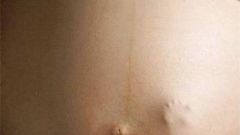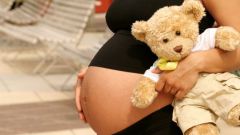Fetal movements - one of the most exciting experiences waiting for a pregnant woman. Many expectant mothers feel the full of my motherhood is in the moments of the first impulses of a baby. Perturbations not only give unique feelings and emotions, but also become a high-precision indicator of the health of the child. From a certain period of doctors recommend pregnant women to track the number of perturbations per day, as excessive or insufficient number of them can indicate any problems in the fetus.
Motor activity of the fetus for the first time occurs in the eighth week of pregnancy, however, in this period the embryo is still too small that its movement could be felt from the outside. For the motor activity of the baby meets the emerging nervous system. Thanks to her activity and muscle of the fetus begin to decline. It yet is not on the coordinated movements. Wiggling child's spontaneous and chaotic, it floats freely in the amniotic fluid that quenched perturbation, so this early on expectant mother does not feel anything unusual. The first movements of her child, the woman begins to feel at 20-22 weeks of pregnancy. If pregnancy is not the first, feelings come a few weeks early.
First regular perturbations appear after 24-25 weeks of pregnancy. From this moment, the expectant mother learns to recognize the language of the movements of the unborn child. Sooner or later she will notice that the fetus begins to respond to changes in the emotional state of the mother. Joy or excitement baby can start to move more actively, but it may subside for a while.
Doctors advise expectant mothers to monitor closely the movements of the foetus from 28 weeks of pregnancy. The norm is not less than ten perturbations per day, beginning at 9:00, ending at 21:00. To 28 weeks the number of perturbations depends on individual sensitivity of a woman and other factors (e.g., location of the placenta at the front or rear wall of the uterus).
The child may show less activity, if the mother is physically active. When walking or active activities of the child like ebauches, as walking creates the effect for a smooth swinging, and the amniotic fluid acts as a natural shock absorber. Such cessation of motor activity is not a cause for concern.
The reason for the anxiety can become long silence of the child for 12 hours or more. If you have not felt any movement for such a long period of time after 28 weeks, this may indicate severe hypoxia, life-threatening. In this case, you must immediately consult the doctor and undergo an ultrasound examination and a CT scan to determine the condition of the child.
Do not be afraid if the baby's activity decreased after 32-33 weeks of pregnancy. The baby is getting crowded in the uterus, so the perturbation becomes less frequent and less severe, however, they should not disappear completely. The expectant mother is recommended daily track the activity of a baby and communicate with him, in preparation for childbirth.
When baby's movements become visible?
Motor activity of the fetus for the first time occurs in the eighth week of pregnancy, however, in this period the embryo is still too small that its movement could be felt from the outside. For the motor activity of the baby meets the emerging nervous system. Thanks to her activity and muscle of the fetus begin to decline. It yet is not on the coordinated movements. Wiggling child's spontaneous and chaotic, it floats freely in the amniotic fluid that quenched perturbation, so this early on expectant mother does not feel anything unusual. The first movements of her child, the woman begins to feel at 20-22 weeks of pregnancy. If pregnancy is not the first, feelings come a few weeks early.
Do not be afraid, if you don't feel frequent perturbations in 20 weeks. At this time they do not say anything about the pregnancy: every woman your threshold. Until 24-25 weeks of perturbations can be negligible.
First regular perturbations appear after 24-25 weeks of pregnancy. From this moment, the expectant mother learns to recognize the language of the movements of the unborn child. Sooner or later she will notice that the fetus begins to respond to changes in the emotional state of the mother. Joy or excitement baby can start to move more actively, but it may subside for a while.
What perturbations can be reduced?
Doctors advise expectant mothers to monitor closely the movements of the foetus from 28 weeks of pregnancy. The norm is not less than ten perturbations per day, beginning at 9:00, ending at 21:00. To 28 weeks the number of perturbations depends on individual sensitivity of a woman and other factors (e.g., location of the placenta at the front or rear wall of the uterus).
The child may show less activity, if the mother is physically active. When walking or active activities of the child like ebauches, as walking creates the effect for a smooth swinging, and the amniotic fluid acts as a natural shock absorber. Such cessation of motor activity is not a cause for concern.
The reason for the anxiety can become long silence of the child for 12 hours or more. If you have not felt any movement for such a long period of time after 28 weeks, this may indicate severe hypoxia, life-threatening. In this case, you must immediately consult the doctor and undergo an ultrasound examination and a CT scan to determine the condition of the child.
Contact your healthcare provider to supply you with the most popular tests that will help to regularly count the number of perturbations of the fetus.
Do not be afraid if the baby's activity decreased after 32-33 weeks of pregnancy. The baby is getting crowded in the uterus, so the perturbation becomes less frequent and less severe, however, they should not disappear completely. The expectant mother is recommended daily track the activity of a baby and communicate with him, in preparation for childbirth.








